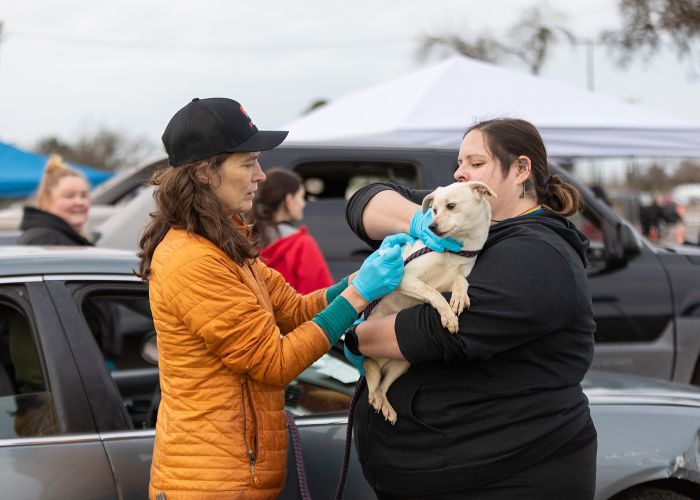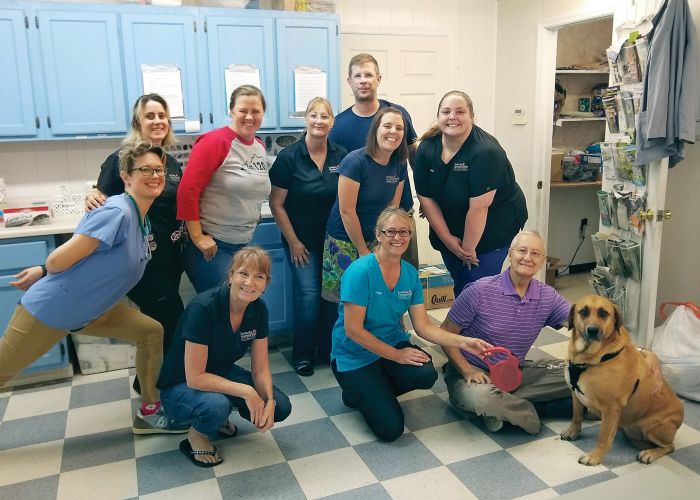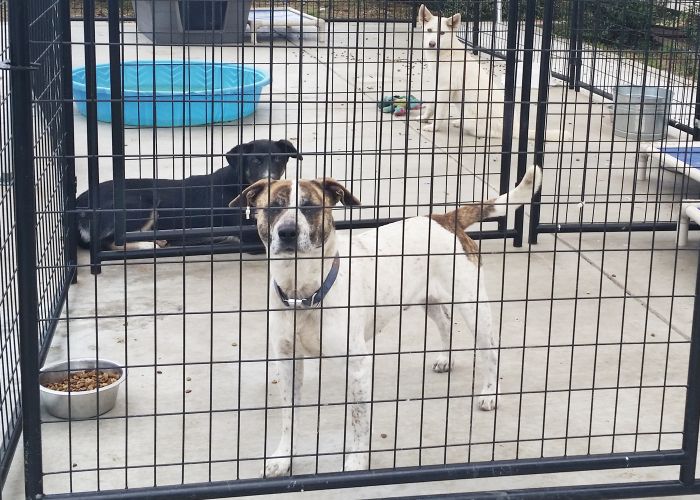Returning healthy feral cats
Tips for veterinary care during trap-neuter-return

Communities around the country are increasingly using TNR as the preferred method of cat control. Here, we examine the best medical practices for TNR, starting from the moment of capture through the time of release. Some of these steps will likely be performed by trappers and caregivers, others by the veterinarians performing the examinations, vaccinations, and surgeries.
Hold cats only a short time before surgery.
Once you’ve captured cats in a humane box trap, hold them there until the time of surgery. Transferring cats to larger enclosures is not recommended for short-term holding, because it increases the risk of human injury as well as cat escape. Cats are experts at escape—and if a feral cat is afforded any opportunity, he will almost always succeed! Recapturing cats can be difficult, and increases the risk of injury to both cats and staff. In addition, escaped cats can be destructive as they attempt to hide and resist recapture.
Holding cats for only a short time (12-48 hours) reduces stress and prevents unnecessary handling. It may also allow a frightened tame cat to settle down and reveal his true colors—tame cats may turn out to have owners or be adoptable, so recognizing them is important. (For more information, see “Feral vs. Frigtened Pet?”.
Place the traps in a warm, quiet, dimly lit area. Loosely covering the trap with a towel or cloth will help to provide the cat with a sense of security, reducing stress.
Administer anesthetics via intramuscular (IM) injection while the cat is in the trap.
Another advantage of holding cats in traps is that the administration of anesthetics can be done without any direct handling. Use a trap divider to humanely confine the cat at one end of the trap, allowing an IM injection to be administered through the trap wire. After the anesthetic takes effect, you can safely remove the cat. After surgery and before awakening, return cats to their traps for recovery. This system ensures that staff never handle the cats while they’re conscious, and there are no opportunities for escape or injury to cats or caregivers.
Use “balanced anesthesia” and provide post-operative analgesia (pain control).
“Balanced anesthesia” refers to the use of a combination of drugs and anesthetic agents that ensure safe, reversible loss of consciousness together with physical and mental relaxation and pain control. Administering a single IM injection that includes a combination of sedatives, analgesics, and anesthetic agents is the best way to reduce stress and rapidly induce safe loss of consciousness in trapped cats.
Recommended combinations for such injections include α2-adrenoceptor agonists, opioids, and dissociative drugs. Numerous anesthetic combinations are possible, but injectable anesthetic protocols with a wide safety margin are preferred. This is because the cat’s presence in the trap makes precise weight calculation (and therefore dosage) difficult and also because physical examination, which could reveal health problems that may increase anesthetic risk, cannot be safely performed prior to anesthesia.
Don’t forget post-op pain medication. A popular choice because of its safety, efficacy, and ease of administration is buprenorphine, which can be administered transmucosally following surgery to ensure continued pain control. As always, trained staff should monitor patients during all stages of anesthesia and recovery.
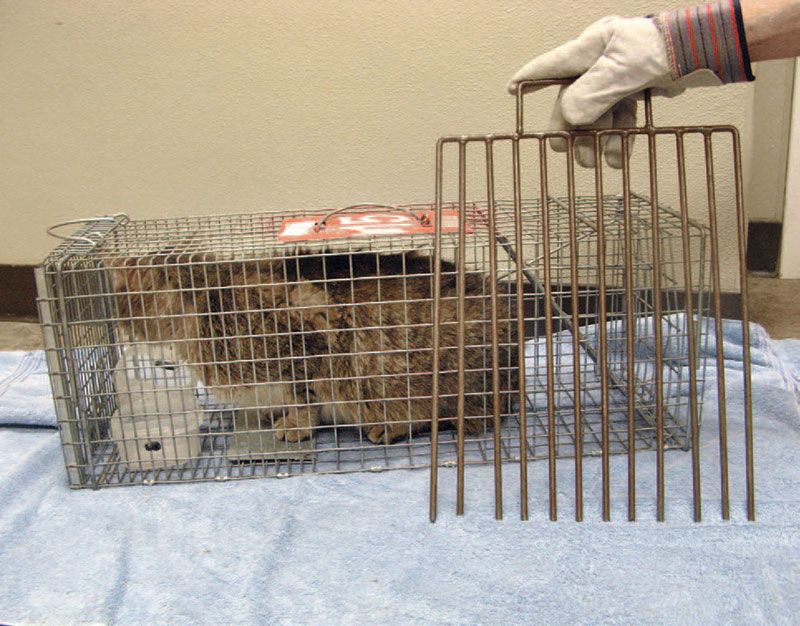

Once the cat is anesthetized, scan for a microchip and perform a physical exam.
All cats should be thoroughly scanned for a microchip using a universal scanner. Highly stressed pet cats can sometimes be mistaken for feral cats, but if you can find a chip, you may be able to return a missing pet to her owner.
Physical exams are crucial to identify problems that may require attention or treatment. Cats undergoing elective surgery should appear to be in reasonably good health and body condition. However, veterinarians must weigh the risks and benefits of spaying and neutering patients with apparent physical abnormalities such as evidence of mild infectious disease or decreased body condition. In the context of TNR, future opportunities to provide the animal with care may be limited, and the alternative outcome may be release without surgical sterilization, or euthanasia.
Although some conditions may increase the risk of complications, in feral cats, the benefits of neutering likely outweigh these risks. Cats who are pregnant, in estrus, or have pyometra (a uterine infection), as well as those who are thin or have mild upper respiratory infection, can be safely spayed or neutered. Common ailments include abscesses, wounds, tail tip injuries, and dental disease. You can usually treat these successfully at the time of surgical sterilization.
Perform spay/neuter surgery according to veterinary medical standards of care.
Surgery should be performed by veterinarians using proper sterile technique and instrumentation. Since free-roaming cats will be returned to their environments the day following surgery and close follow-up is not generally possible, most surgeons prefer to make small incisions and ensure that they are securely closed without the use of skin sutures.
For spays of feral cats, some surgeons prefer a flank approach rather than the traditional ventral midline incision. The flank approach allows caregivers to monitor a cat’s incision from a distance, and may help to prevent evisceration should post-operative opening of the surgical wound occur. The flank approach is also good for lactating queens to prevent the possibility of incising mammary tissue and causing leakage of milk into the surgical wound.
Spay all female cats, including those who are pregnant or nursing.
Although it may be emotionally difficult, spaying pregnant cats is truly a humane course of action. Delivering and raising kittens outdoors is stressful for both the mother and kittens. The mortality rate of feral kittens is high—often more than 75 percent die within the first several weeks of life. Additionally, pregnant queens often migrate prior to delivery to find a secure nesting site. Even if the queen chooses to deliver her litter nearby, it can be very difficult to locate her nest. Furthermore, if she perceives any threat, she will likely attempt to move her kittens. This can make it extremely difficult to locate and capture the litter once they are born outdoors. Finally, retrapping her may prove to be difficult, and she will continue to reproduce. Confining pregnant feral cats through delivery of their kittens is extremely stressful and not recommended.When you trap a lactating queen, make sure to search for kittens. Whether or not you find any, lactating queens should be spayed. Try to release a mother cat as soon as it is deemed safe so that she can return to care for her kittens. She will continue to produce milk even though she is spayed; the hormones responsible for milk production will not be affected. Cats who are pregnant or lactating should receive fluid supplementation; administer warmed fluids subcutaneously post-operatively prior to recovery.
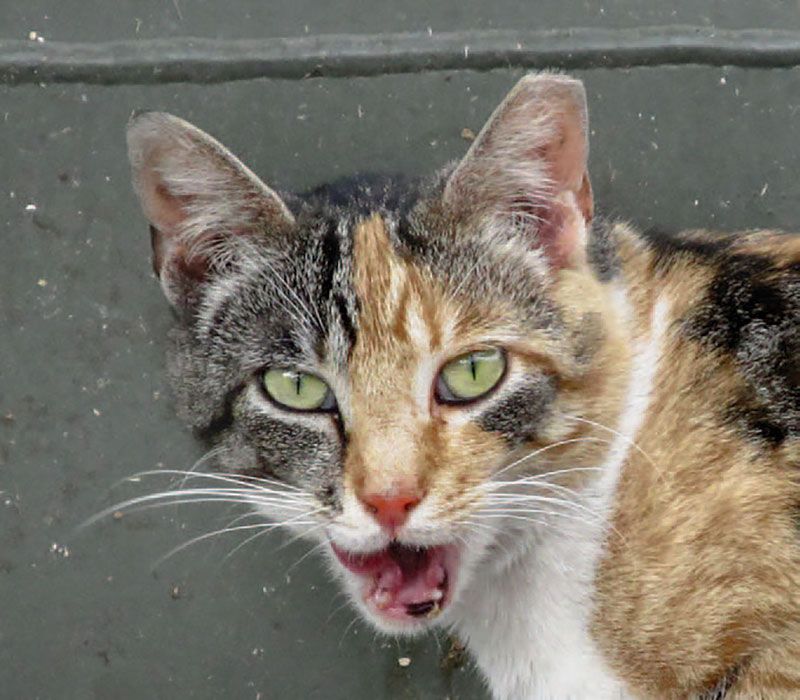
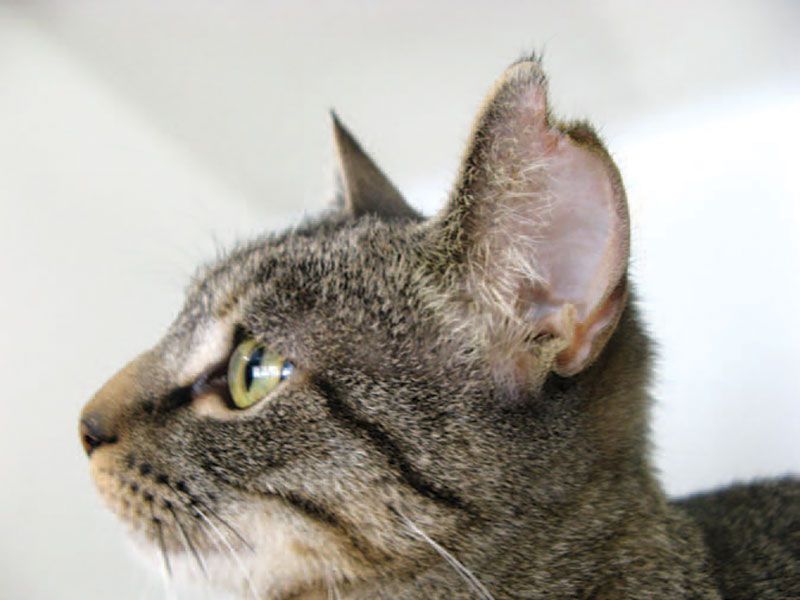
Perform ear tipping for identification.
Ear tipping is performed in order to clearly and permanently mark neutered, vaccinated cats who are being humanely managed by TNR. Because it is often impossible to get close enough to a free-roaming cat to see a subtle mark or tattoo, such methods of identification are not useful. Removal of the tip of one of the ears is the accepted global standard for identifying a neutered free-roaming community cat. Alley Cat Allies recommends removal of the left ear tip, and this standard is widely used, but other organizations identify cats by removing the right ear tip, or by removing the tip on one side or the other, depending on the sex of the cat. It is best to be consistent with the standard in your community.When cats are ear tipped, animal control officers, shelter workers, and caregivers can easily and reliably identify them as being part of a TNR program. This ensures that all cats in a colony are humanely managed and prevents shelter euthanasia of cats who are part of managed colonies. It’s important to tip ears rather than notching them, since notching may occur as the result of fighting—especially in tomcats—and may be mistaken for a sign of previous TNR.
Ear tipping should be performed under clean surgical conditions. Most veterinarians perform the procedure using a pair of hemostatic forceps and scissors. Scissors are generally preferred over a scalpel blade, since their crushing action aids in stopping bleeding. Straight scissors and straight hemostats should be used to crop the ear in a straight line and ensure the desired visual effect: the ear should have a distinct straight edge that is easy to recognize from a distance.
Vaccinate against rabies and FVRCP.
Rabies is a core vaccination for all cats—an absolute necessity. Rabies is endemic throughout the mainland United States, and vaccination is the most effective method of control. All cats should be vaccinated at the time of surgery using an approved three-year vaccine. In addition, the administration of a modified live FVRCP vaccine is also recommended. Immunity against panleukopenia (the P in those initials, after feline viral rhinotracheitis and calivirus) is especially important for cats because of the widespread nature and severity of the disease. Panleukopenia is caused by feline parvovirus and is devastating to susceptible cat populations. Fortunately, it can easily be prevented by vaccination.
Historically, scientists have debated the effectiveness of vaccines given at the time of surgery, arguing about whether a single vaccination alone can confer clinically significant immunity. Recent studies have alleviated these concerns by demonstrating that cats do develop a strong immune response following vaccination at the time of spay/neuter. Although the exact duration is unknown, immunity against rabies and panleukopenia following a single vaccination may persist for years. Considering the relatively low medical risk and financial cost of vaccination compared to the potential benefits for feline health, community cats undergoing TNR should always be vaccinated against these diseases. Periodically retrapping cats for revaccination is ideal, although it may prove challenging to recapture cats.
When administering vaccines to cats undergoing TNR, remember to always use sterile needles for each cat to prevent the spread of disease. Also, it is best to vaccinate cats after surgery, because any reaction to the vaccine will be easier to recognize in a cat coming out of anesthesia, compared to one under deep anesthesia. Fortunately, serious vaccine reactions are rare and if they do occur, it is usually within a few minutes of administration.
Skip the FeLV and FIV test.
The American Association of Feline Practitioners (AAFP) recommends testing all cats for FeLV and FIV and confirming positive test results—but it is difficult (if not impossible) to apply these guidelines, intended for pet cats, to ferals.
Consider that, based on surveys of thousands of free-roaming and feral cats, the incidence of these diseases is very low (only approximately 2 percent in healthy cats) based on screening tests. In addition, community cats are no more likely to test positive than owned pet cats. When cats test positive on screening tests, confirmatory testing requires substantial time and money and is not generally feasible when cats need to be returned to their colonies.Also, keep in mind that neutering greatly reduces virus transmission by decreasing fighting and preventing kitten births. What’s more, testing is generally expensive and, for successful cat population control, the bulk of financial resources must be used to sterilize as many cats as possible. Although testing all cats for FeLV and FIV may be ideal, considering the substantial cost of testing, the low disease incidence, and the fact that neutering helps to curtail transmission, this approach is probably not the best investment for the cats.
In contrast, testing is recommended when cats appear unthrifty at the time of presentation for TNR. In these cases, test results can be used to guide decisions.

Consider the potential benefits of providing cats with cost-effective parasite control.
Parasite infestations are common in cats—especially fleas, ear mites, and roundworms. For long-term control, repeated antiparasitical treatments are generally required, especially in the context of outdoor multicat environments, where the risk of re-infestation is high. For these reasons, a single treatment at the time of TNR may be of limited benefit in most cases. However, for some cats, especially those who are unthrifty and young (less than 1 year of age), even temporary reduction in parasite burdens may provide significant support.
When considering products, selection should be limited to injectable and topical products to ensure safe and reliable administration. Because it costs only pennies per dose, routine administration of injectable ivermectin to all cats is recommended at the time of TNR. A single subcutaneous injection of 1-percent ivermectin solution at a dosage of 0.3 mg/kg is highly effective against ear mites, and also temporarily reduces roundworm and hookworm burdens. Because of the cost, it may not be feasible to treat all cats for fleas. If you do opt for flea treatment, consider using topical fipronil; it is among the most cost-effective flea treatments available and is safe for cats of all ages.
Tame small kittens.
Because of their high mortality rate in colonies, if kittens weighing less than 3-4 pounds are captured, they should be tamed and placed in homes rather than returned to their colony sites. The process of taming involves confinement with daily handling sessions, and requires patient and committed caregivers. Feral kittens can be absolute spitfires—wear gloves and use thick towels during handling sessions. Caregivers should contact their local health department and seek medical care in the event of a bite.
The taming process may take anywhere from a few days to several weeks to accomplish, and is most successful in those kittens younger than 3-4 months of age. The good news is that taming kittens can be very rewarding: these kittens often become wonderful, friendly pets!
Hold cats overnight following surgery, and always return them to their original site of capture.
Following surgery, cats need ample time to fully recover from the effects of general anesthesia, which may leave them woozy, disoriented, and sleepy. Holding them safely overnight in their traps will help to ensure that they are fully alert and physically coordinated for safe release the following day. Attach bowls to the trap using zip ties; this will allow caregivers to offer food and water prior to release.
Cats must be returned to their original home sites. Release to other areas, even those that seem protected, should only be done as a last resort and with careful consideration and implementation of relocation protocols, including confinement at the new site for a period of 2-4 weeks. Cats possess strong homing instincts and will attempt to return to their original “home” if released in a new location. Releasing a cat in an unfamiliar area is analogous to a person being lost without a map or other method of communication to get home.



